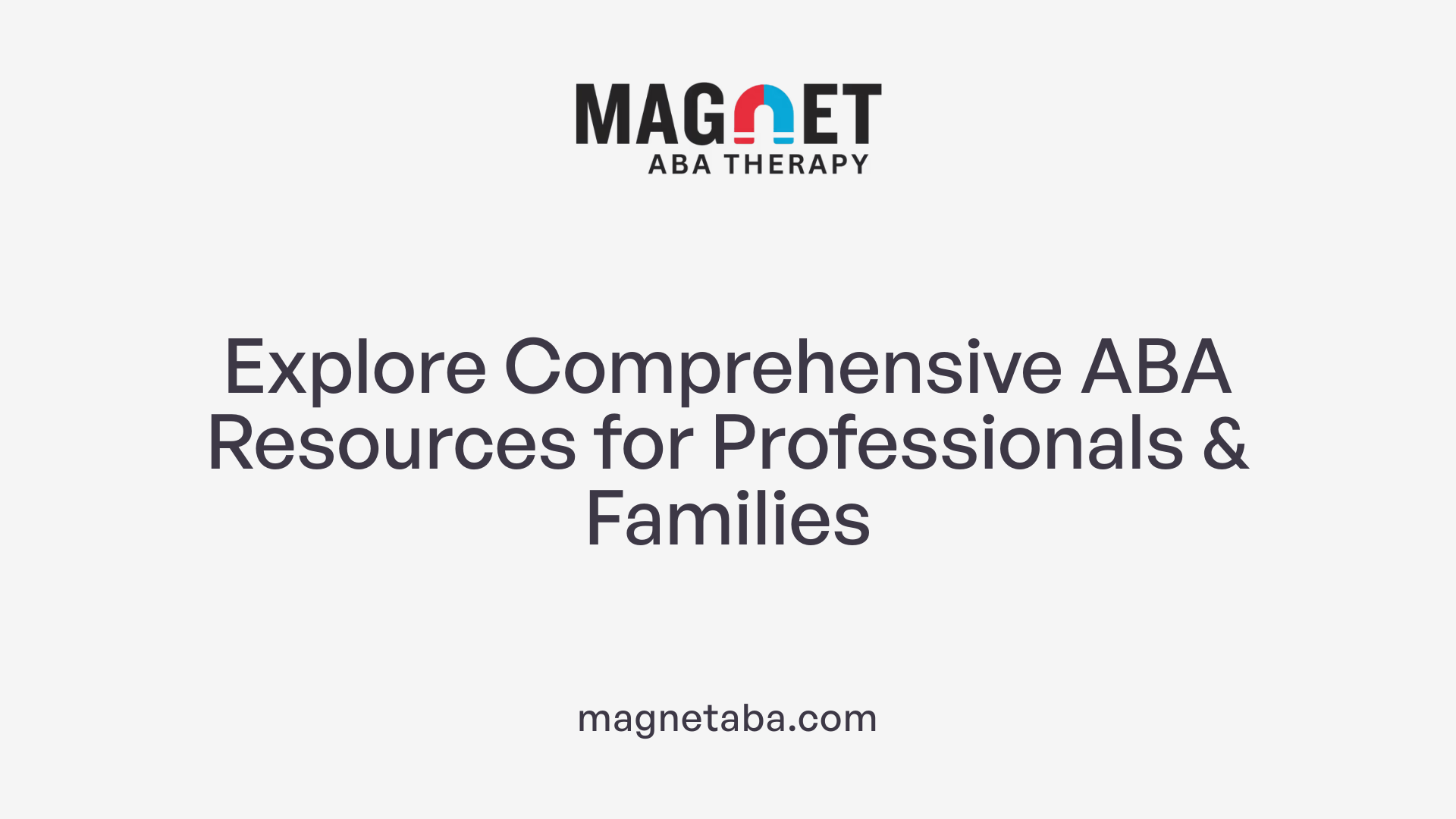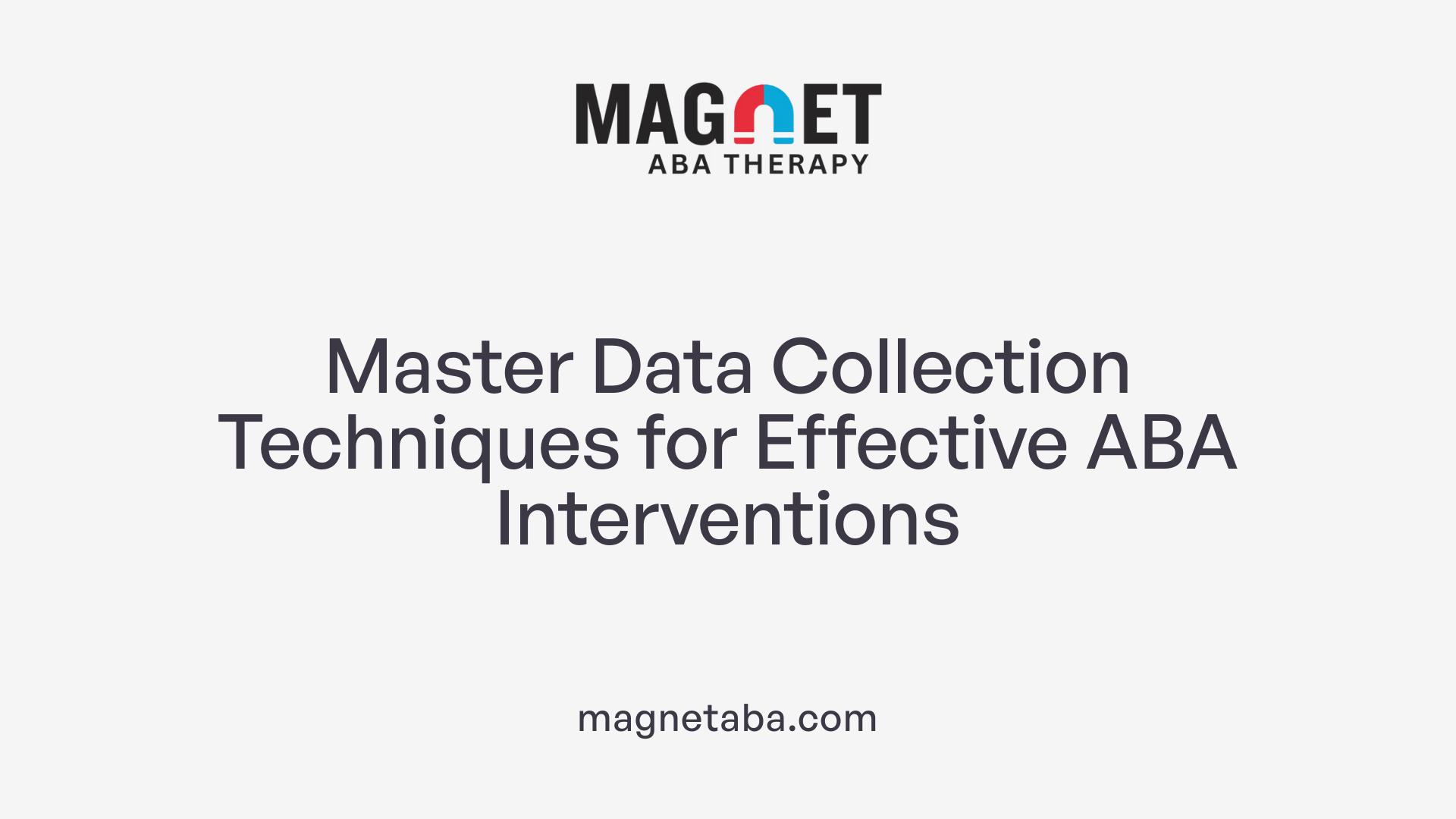A Comprehensive Guide to Navigating ABA Resources
Accessing reputable ABA (Applied Behavior Analysis) resources is essential for professionals, parents, and caregivers involved in autism support. From educational materials to professional training and research articles, understanding where and how to find these resources empowers stakeholders to make informed decisions and implement effective interventions. This guide explores the diverse range of available ABA resources, focusing on how to locate free downloads, find therapy services, and access scholarly research—helping you navigate the expansive landscape of ABA support with confidence.
Available Educational and Professional ABA Resources

What are available ABA educational and professional resources?
A wide range of resources exists to support both professionals working in Applied Behavior Analysis (ABA) and parents of individuals receiving ABA therapy. Notably, the Autism Society of America (ASA) offers a comprehensive, unbiased ABA resource that was carefully developed over 18 months. This guide includes input from a diverse group, such as autistic individuals, families, caregivers, and professionals, ensuring multiple perspectives are represented.
The ASA’s resource provides clear and accessible information about ABA’s purpose, its history, and the variety of experiences with the therapy. It emphasizes the importance of personalized, outcome-based interventions that respect individual preferences and promote quality of life. The guide also features a variety of formats—original language, plain language, and easy-read options—alongside a FAQ document to assist understanding and decision-making.
Intervention strategies and tools
ABA employs multiple techniques to support learning and development. These include discrete trial training, naturalistic teaching approaches, and the use of assistive technology. All strategies are tailored to each individual through thorough assessments, ensuring that programs are customized based on specific skills, needs, and preferences.
Data collection plays a vital role in ABA, allowing practitioners to monitor progress objectively and make data-driven adjustments. Additionally, family members are trained to support learning behaviors throughout daily routines, making intervention a collaborative effort.
Guidance on personalized ABA programs
Creating effective ABA programs involves setting specific, measurable goals across different skill areas such as communication, social skills, and daily living. Qualified behavior analysts, or BCBAs, design these programs by conducting detailed assessments and regularly measuring progress.
The flexible and individualized nature of ABA means it can be provided in various settings—from homes to schools and community environments. This adaptability helps ensure each person’s unique circumstances and needs are addressed.
Support networks and advocacy initiatives
Beyond direct therapy, numerous resources and networks are available to support ongoing education and advocacy. Parents and professionals can access scholarly journals like the Journal of Applied Behavior Analysis and databases such as APA PsycInfo for research-based information.
Organizations and online platforms also offer opportunities for professional development, compliance training, and career guidance. Connecting with peers and experts through hotlines, committees, and community groups fosters shared knowledge and support.
Furthermore, the ASA advocates for expanding autism services, promoting informed decision-making, and ensuring access to a range of therapies and supports. These initiatives aim to empower individuals and families while safeguarding their rights.
| Resources Type | Availability | Focus Area | Additional Details |
|---|---|---|---|
| Educational Guides | Multiple formats | ABA overview | Development with input from stakeholders |
| Intervention Tools | Variety | Techniques & assistive tech | Individualized, data-driven approaches |
| Scholarly Articles | University access | Research & evidence | Peer-reviewed, credible sources |
| Support Networks | Online & community | Advocacy & peer support | Connect with professionals & peers |
| Professional Development | Webinars, training | Skills & compliance | Career growth & continuous learning |
This array of educational and professional resources ensures that both practitioners and families are well-equipped to understand, implement, and advocate for effective ABA practices tailored to individual needs.
Locating Free ABA Resources and Downloads
 Finding accessible, high-quality ABA resources and downloads is essential for professionals, caregivers, and families involved in autism support. One reliable source is the Autism Society of America, which provides an extensive ABA resource document. This resource offers unbiased information about the therapy, including its principles, practices, and ethical considerations. It aims to educate users on how ABA can be implemented positively and responsibly.
Finding accessible, high-quality ABA resources and downloads is essential for professionals, caregivers, and families involved in autism support. One reliable source is the Autism Society of America, which provides an extensive ABA resource document. This resource offers unbiased information about the therapy, including its principles, practices, and ethical considerations. It aims to educate users on how ABA can be implemented positively and responsibly.
In addition to organizational websites, many online repositories and educational platforms host free tutorials, assessment tools, and training materials. These platforms serve practitioners and caregivers looking to expand their knowledge and skills in ABA. Examples include university-led libraries, behavioral health websites, and professional association portals.
When exploring these sources, it is crucial to assess the quality and ethical standards of the materials. Reputable resources promote respectful, individualized approaches that respect the diverse needs and preferences of individuals receiving ABA therapy. Ensuring the content aligns with current best practices helps support effective and respectful intervention.
Access to diverse formats is also important. Many organizations provide materials in plain language, easy-read formats, and other accessible options. These accommodations help meet the needs of individuals with different reading levels and communication preferences, broadening the reach of valuable ABA information.
Overall, verifying the credibility of the source and ensuring materials are up-to-date and ethically sound will help users benefit most from free ABA resources. By leveraging trusted organizations, online repositories, and accessible formats, caregivers and professionals can access quality tools and information to support meaningful and respectful ABA practice.
Accessing ABA Therapy Services Effectively
How can I access ABA therapy services?
To begin, the most important step is consulting with your child's healthcare team, such as a pediatrician or a specialist in Autism. They can evaluate your child's needs and determine if ABA therapy is suitable. Often, they can also provide a referral and help you get an official prescription or recommendation.
Next, it’s crucial to check your insurance benefits. Many private insurance plans, as well as Medicaid, cover ABA therapy if it is deemed medically necessary. Understanding your coverage can help you plan financially and avoid unexpected costs.
Once you know your insurance status, start searching for qualified local providers. Look for Board Certified Behavior Analysts (BCBAs) and trained behavior technicians who adhere to professional and ethical standards. Resources such as local directories, community health centers, or reputable online platforms can guide you to licensed professionals.
The last step involves working with your chosen provider to schedule an initial assessment. This intake process helps identify your child's specific strengths and challenges. Based on this assessment, your provider can develop a personalized ABA plan. These programs can be carried out in various settings like at home, in school, or within community programs.
Throughout this process, staying informed and asking questions about credentials, safety procedures, and progress measurement ensures high-quality care for your child. Developing a tailored approach maximizes the benefits of ABA therapy, supporting your child's growth and development in a meaningful way.
Research Locations for Scholarly Articles and Peer-Reviewed Journals
 When researching Applied Behavior Analysis (ABA), accessing trustworthy and peer-reviewed sources is essential for accurate and current information. Several academic databases serve as valuable tools for this purpose.
When researching Applied Behavior Analysis (ABA), accessing trustworthy and peer-reviewed sources is essential for accurate and current information. Several academic databases serve as valuable tools for this purpose.
Which academic databases can I use for ABA research?
Key resources include APA PsycINFO, PubMed, and ERIC. These platforms specialize in psychological, medical, and educational literature, respectively, making them ideal for exploring ABA topics. For instance, PsycINFO provides extensive coverage of behavioral sciences, while PubMed includes journals related to health and medicine. ERIC, managed by the U.S. Department of Education, offers research in education practices, including ABA strategies.
Understanding scholarly sources
Scholarly sources are peer-reviewed, meaning other experts evaluate the research before publication. These include journal articles, dissertations, and reviews from reputable academic publishers. Such sources ensure the information is reliable, well-researched, and up-to-date.
Using university library resources
Many colleges and universities provide access to these databases through their library systems. For example, Regis College offers access to APA PsycINFO and other databases, but requires a login. University libraries often offer tutorials on how to effectively search and filter results to find the most relevant research.
How do I find scholarly articles and research on ABA?
To locate scholarly articles on ABA, start with the search queries like "Scholarly articles ABA research databases." This search directs you to specialized platforms containing peer-reviewed papers, books, and dissertations relevant to ABA practices and theories.
By utilizing these professional and academic resources, parents, practitioners, and researchers can stay informed about the latest evidence-based practices in ABA.
ABA Data Collection Methods and Practical Techniques

What are common ABA data collection methods?
In Applied Behavior Analysis (ABA), collecting data accurately is essential for understanding behavior patterns and evaluating intervention effectiveness. Several methods are commonly used by professionals, including task analysis, scatterplot analysis, frequency and duration recording, latency recording, ABC data collection, interval recording, and time sampling.
Task analysis involves breaking complex behaviors into smaller, manageable steps. This detailed approach helps practitioners observe each part of a behavior, making it easier to implement focused strategies and measure progress.
Scatterplots are visual tools that display behavior occurrences over time. They help identify patterns, triggers, or times of day when behaviors are more likely to happen.
Frequency and rate recordings count how often a behavior occurs within a specific timeframe. Duration recordings measure how long a behavior lasts, providing insight into its intensity or persistence.
Latency recording tracks the time between a stimulus and the initiation of a behavior, helping identify obstacles or delays.
ABC data collection records Antecedents, Behaviors, and Consequences, offering contextual insights about behavior triggers and maintaining factors.
Interval recording and time sampling involve observing whether a behavior occurs within set intervals, providing a snapshot of behavior frequency during those periods.
Overall, these methods enable ABA professionals to gather precise, objective information. This data supports decision-making, helps tailor interventions to individual needs, and tracks progress effectively.
Empowering Your Journey in ABA Support
Access to reliable ABA resources is a cornerstone for effective intervention and support for individuals with autism. Whether you're seeking training tools, scholarly research, or therapy services, the key is to leverage reputable organizations, academic platforms, and professional networks. By understanding where to find trusted materials and how to evaluate their quality, you can ensure that your efforts align with best practices. Remember, personalized, ethical, and evidence-based approaches maximize positive outcomes and foster self-determination. Stay committed to continuous learning and advocacy, and utilize the abundant resources available to empower your journey in ABA support.
References
- How to ABA: Practical Programs and Resources
- Autism Society of America Shares Applied Behavior Analysis (ABA ...
- Applied Behavior Analysis (ABA) | Autism Speaks
- Connect to ABA Resources | American Bankers Association
- Find Articles - ABA Applied Behavior Analysis - Guide to Resources
- Applied Behavior Analysis (ABA) | Autism Speaks
- Applied Behavioral Analysis (ABA) - Autism Speaks
- ABA and other therapies | Autism Speaks











